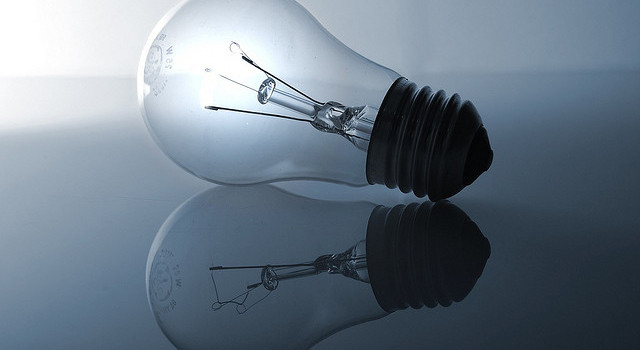
Our Current Energy Picture
In September 2012, the UK Energy regulatory body, OFGEM, speculated that the UK might suffer from blackouts as soon as 2015 – but why?
The UK recently signed up to the Large Combustion Plant Directive (LCPD), which is an EU directive introduced to cut the amount of sulphur dioxide and nitrogen oxide entering the atmosphere. All combustion plants built after 1987 must comply with the emission limits set out in the LCPD. They can do this by installing solutions to reduce the emissions, or they can opt out of the directive. If they chose to opt out of the LCPD, then since 2007 they would have been operating under restricted conditions and by 2015 they will be required to close altogether (either that or be restricted to a lifespan of 20,000 hours in operation – whichever comes first).
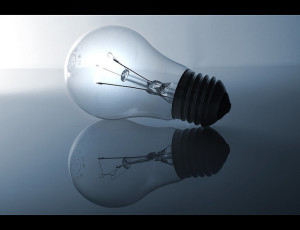 Seven power plants have chosen to opt out of the LCPD, so will need to close in the near future. These seven are: Didcot, Fawley, Littlebrook, Tilbury, Grain, Kingsnorth and Ironbridge. As a result OFGEM has forecast that the reserve margin (the difference between supply and demand) will therefore be between 0 and 9% in winter 2015.
Seven power plants have chosen to opt out of the LCPD, so will need to close in the near future. These seven are: Didcot, Fawley, Littlebrook, Tilbury, Grain, Kingsnorth and Ironbridge. As a result OFGEM has forecast that the reserve margin (the difference between supply and demand) will therefore be between 0 and 9% in winter 2015.
Furthermore, if we take into account the number of nuclear power plants in the UK that are due to be decommissioned by the end of the decade, then it all paints a very bleak energy picture in terms of electricity supply being able to meet energy demand.
How Can we Keep the Lights on?
So there are four options that we may be able to take to prevent this situation from occurring:
- Fight this EU ruling.
- Increase new capacity (build more power stations).
- Decrease national demand.
- Better manage the current supply and demand.
Option 1 – Overturn the EU ruling
Fighting the EU ruling might be the short-term answer, but what if doesn’t work? The UK will be forced to pay out further money in fines that it can ill-afford and we are already resigned to handing over an increased contribution to the EU budget (despite austerity measures being in full swing in the UK). Our Prime Minister clearly doesn’t want to rock the boat in terms of our relationship with the EU.
If we were to overturn it, it would be a short-term fix and would also come at the expense of the environment. The plants that are due to be closed are being closed because of the amount of pollution they create, so allowing them to stay open will be detrimental to the UK reaching the ambitious emission reduction targets agreed to under the Kyoto Protocol.
Option 2 – Introduce new capacity
Perhaps the most obvious long-term solution would be to increase capacity in the grid. How do you meet increased demand? Well you can simply build more power stations. This seemed to be the thinking behind the 2012 budget, when the UK Government turned its back on its election slogan of being ‘the greenest ever’ and proposing that we install a new generation of gas power plants.
Although combusting gas is slightly cleaner than burning coal and oil, we should really hold onto more of these natural resources as they are vital to produce goods like plastics, which we are so reliant on in the 21st Century.
New nuclear plants are also being planned – with Hitachi taking over the Horizon nuclear power contract (which is also bringing in UK companies such as Rolls-Royce as part of the deal). I believe that nuclear power is an important element of our energy mix, but there are two issues. Firstly, it needs to be economic and decommissioning costs need to be factored in prior to any contracts being signed off. Secondly, installing a nuclear power plant takes time – it may be as much as twelve years before we see any power being produced from the proposed Wylfa plant on Anglesey, North Wales, and the Oldbury plant in Gloucestershire.
Renewables are obviously not universally popular (just see the Telegraph comments section!), but they are a becoming a proven viable solution and producing just over 10% of the UK’s energy in 2011.
What’s more, many renewable sources can be installed rather quickly. For instance, a wind turbine can be installed in a matter of months. Homeowners can install a solar PV installation on their roof very easily, which will cover the vast majority of their electricity requirements. Installing solar PV can be seen either as increased capacity for the grid (since you can sell it back) – or a reduction in demand, since the homeowner requires less energy. However, producing energy from renewable sources works, and renewable energy is here to stay.
Option 3 – Better manage demand
The best short-term solution in my view is to reduce demand, since many of the solutions can be installed very quickly and simply. There is also funding available for installing these measures, with initiatives such as the Green Deal that is set to launch at the end of January 2013. But even if you don’t get funding, walking to your local DIY store and picking up a couple of rolls of loft insulation for a few pounds should see you save that money by reducing some of your heating bills in the first year. If all homes and businesses were to increase their energy efficiency by installing things like energy-saving light bulbs, energy-efficient boilers and insulation, then the issues of decreased supply in the grid would become irrelevant.
If we reduced the overall UK energy consumption by 20% through installing energy efficiency measures, then the Government wouldn’t need to react with extreme measures such as suggesting using gas to meet our energy shortfall. It would also give us more time to make slightly more educated decisions. The technology involved with things like solar panels is improving rapidly, so with this extra time, the logical economic choice could become more obvious in the next five years.
Option 4 – Utilising the existing grid
The final way to reduce the chances of these outages is to move from a centralised grid (such as the one we have now), to a more decentralised smart grid, where we better manage the supply and demand that we currently experience.
Energy is produced in the middle of the night at the moment, simply because we can’t turn off power stations very easily (nuclear mainly). At these times demand is incredibly low, because the vast majority of us are tucked up in bed, and we have all this energy produced, but we can’t store this power in an efficient way.
We already have things that take advantage of this ‘spare capacity’ such as pumped storage, where the electricity is used to pump water back to a top reservoir (see the Dinorwig case study), where spare electricity is cheap. Also in the home, there are things like night storage heaters, where electricity is used at night (since demand is low and cheap) to heat clay bricks that then release the heat energy during the day.
But what if things were taken to the next level, by using new technologies in appliances and altering some of our day-to-day behaviours.
For example, by doing things like turning your fridge off for three hours at peak electricity demand times. The fridge is well insulated and it wouldn’t warm up much internally, your food wouldn’t be spoiled, and if you opened the door it would have an override function that would switch it on and cool it down.
Imagine you drive an electric car that takes six hours to charge. At 6pm you arrive home and plug it in, but you don’t decide at what point it is charged over night. You simply set the fact the function, that is needs to be fully charged by 7am the next day. Through smart meter technology you could then use your energy operator to send instructions and decide when best to charge you car. This would all be affected by existing demand load on the grid.
Or what if your house ‘learned’ your energy usage patterns? For example, it knows when you are there (from sensors in the house), it knows when you normally take showers – so it can ensure there is only hot water as and when you need it, or it turns off your heating when you open a window to conserve energy.
These are just a few examples of where, with technology and better data about supply and demand, we could better utilise the electricity in the grid.
The problem is – as we saw when we went to EcoIsland a few weeks ago – this technology is still a long way off. We know how we want it to work, but the technologies that will enable it need to be agreed across the industry (does anyone remember Blu-Ray versus HD-DVD?). Despite the Government’s intention of installing smart energy meters across the country by 2019, it still seems a long way off.
Final Thoughts
Without wanting to sound too negative, I think it is fair to say that the UK is due to head into energy difficulties in the near future. Therefore in the short term we need to go about decreasing energy demand through efficiency and simple education (turn lights off when you leave a room). In an effort to decarbonise our economy and the country as a whole, I think we should look to install cleaner, renewable electricity generation solutions. These will not only provide a boost for the Green economy (which is one of the major growth areas in the UK), but it could help us become world leaders in the industry and allow us to export our expertise.
It will take time for the smart grid to become established, but it will come and will certainly make a big difference. But what’s evident, by some of the negative press in the USA, is that it needs to be done carefully and the Government need to make it clear what they are going to be doing with it. For example, it cannot be seen as a way of energy companies and the government invading people’s lives by exploiting their personal data.
It’s quite evident that the Government can’t simply just do one of these things – it needs back a sensible blend of all of them (except maybe fighting the EU ruling), but they need to quickly establish a plan of action and stick to it to avoid the power shortages. The reasoning? Well I, for one, am looking forward to my 2015 Christmas movie (provided the BBC hasn’t completely disintegrated by then).
Author: James Alcock



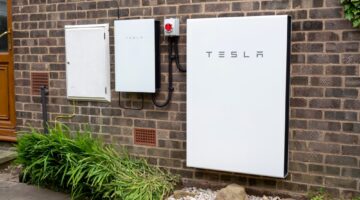
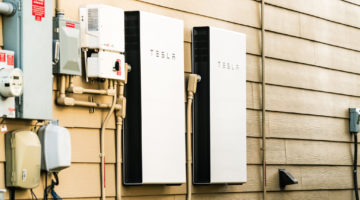
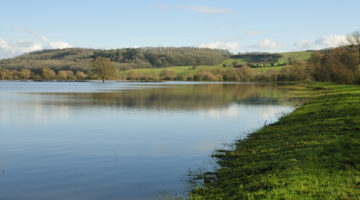






Excellent run-down of our options and you’re right of course that it will require a combination of things. I worry that managing demand, while an extremely effective method, relies too heavily on the general public who are time poor, resource poor and who generally put the environment way down on their list of priorities.
I further worry that our current political situation in the UK does not bode well for action with Georgey Boy Osbourne determined to turn a blind eye.
On the plus side, nothing will highlight our plight more than a blackout!